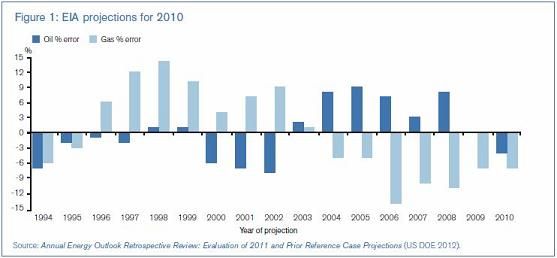Apocalypse Slow


Labels: Greer; Kurt Cobb; Peak oil; EIA;


Labels: Greer; Kurt Cobb; Peak oil; EIA;

Labels: ev vehicles, natural gas vehicles, Peak demand
Labels: climate, divest, environmental groups
It's been seven years now since the massive honeybee die off began. But honeybee colonies have been in a gradual decline for decades. The population has dropped from 6 million in 1947 to 3 million in 1990 and stands at about 2.5 million today. One single crop, almonds in California, now require over 60 percent of all managed colonies.
There are eight to 10 common viruses, fungal pathogens, bacterial pathogens and a parasitic mite contributing to the deaths, said Michelle Flenniken, a microbiologist and professor at Montana State University, who studies honeybee pathogens."There is no quick fix," said May Berenbaum, head of the entomology department at University of Illinois at Urbana-Champaign during a press conference that day. "Patching one hole in a boat that leaks from everywhere isn't going to stop it from sinking."
“There’s going to be a shortage of bees in this entire growing season,” James Frazier, a professor of entomology at Pennsylvania State University, said of the U.S. situation. “The ability to replace bees that have been lost has been exhausted, so there’s a very large question mark about next year. Whether we’ve reached a point of no return, we don’t know.”
For much of the past 10 years, beekeepers, primarily in the United States and Europe, have been reportingannual hive losses of 30 percent or higher, substantially more than is considered normal or sustainable.But this winter, many U.S. beekeepers experienced losses of 40 to 50 percent or more, just as commercial bee operations prepared to transport their hives for the country’s largest pollinator event: the fertilizing of California’s almond trees.
The gravity of the situation was underscored on Monday, when the European Commission (EC) said it intended to impose a two-year ban on a class of pesticides known as neonicotinoids, now the world’s most widely used type of insecticide. Neonicotinoids are one of the leading suspected causes of colony collapse disorder, and the European Commission announced its controversial decision three months after the European Food Safety Agency concluded that the pesticides represented a “high acute risk” to honeybees and other pollinators.
The EC action will restrict the use of three major neonicitinoids on seeds and plants attractive to bees, as well as grains, beginning December 1. “I pledge to my utmost to ensure that our bees, which are so vital to our ecosystem and contribute over 22 billion Euros [$29 billion] annually to European agriculture, are protected,” said European Union Health Commissioner Tonio Borg.
No one investigating the issue is suggesting that neonicotinoids are the sole cause of current bee declines.Tucker, other beekeepers, and entomologists say that the cause of colony collapse disorder is likely a combination of factors that includes the widespread use of pesticides and fungicides, as well as the spread of viral pathogens and parasitic mites in beehives. While mites and diseases have long been known to cause significant declines in domesticated bee populations, no single pathogen or parasite, say entomologists, appears to sufficiently explain the current rate of hive collapse.A recent study that found unprecedented levels of agricultural pesticides — some at toxic levels — in honeybee colonies is prompting entomologists to look more closely at the role of neonicotinoids in current bee declines...While not downplaying neonicotinoids as a potential culprit, Eric Mussen, an apiculturiust at the University of California, Davis, noted that the case against these pesticides is not clear-cut.For example, honeybees are apparently doing fine in Australia, where neonicotinoids are widely usedand varroa mites are not a problem.Neonicotinoid use is common in Canada, but colony collapse disorder is not significantly affecting hivesthere.
Western honey bees have a taste for a range of nectars, so they are exposed to many different chemicals in and on the plants they pollinate. In addition, commercial hives are often treated with insecticides to kill parasitic mites. The trouble is that the western honey bee doesn’t have a lot of defenses: only 46 of its genes (about half that of most insects) can metabolize these potentially dangerous chemicals.Even more important than how many genes the bees have is knowing what kicks these genes into gear. For the first time, researchers have identified the chemicals that regulate these genes, and have determined that many bees raised in commercial colonies don’t get enough of them.The researchers identified a handful of chemicals that boost these detoxifying genes. The most potent was an acid called p-coumaric acid, which is found in pollen grains.By eating honey, which contains traces of pollen, the bees become less susceptible to the range of pesticides and pathogens they encounter on their pollinating exploits.
Wild bees are normally raised on honey, so there is no shortage of p-coumaric acid in their diets.But commercial colonies raised for agricultural pollination aren’t so lucky. To cut costs, many bee keepers harvest and sell the honey their bees produce and instead feed the growing bee babies high fructose corn syrup or other sweeteners.While nutritionally comparable, the researchers say these sugars lack essential chemicals like p-coumaric acid.
Labels: bees, Climate Change, Liebig, Peak Oil
Greetings
"For there to be a chance — even just a 50/50 chance — of limiting temperature rise to 2°C, global greenhouse gas emissions must peak by 2020 (earlier for the developed world) and fall by 9 or 10 percent a year every year thereafter.Nothing like that has ever been done. Not even close. No major energy transition has ever moved that quickly. Carbon emissions have never fallen that fast, not even during the economic collapse brought on by the demise of the USSR. Getting to change of that scale and speed is not a matter of nudging along a natural economic shift, as clean energy cost curves come down and fossil fuels get more expensive. That scale and speed seem to demand something like wartime mobilization."
"This entire project is premised on the notion that harsh climate impacts will eventually spur the public to demand emergency action from governments. That is, to put it mildly, a debatable premise. I’ve always thought people put way too much faith in it. It’s really, really difficult to know what kind of impact would be big or frequent enough to spur that kind of public unity, especially directed at climate change mitigation (as opposed to adaptation). After all, no one will be able to prevent climate disasters within their lifetime through mitigation — the next 50 years of climate change are already “baked in.” So we’re talking about the peoples of the U.S. and the world rallying around emergency measures, wartime sacrifices, on behalf of future generations. I can easily imagine that never happening. And if it does, it’s going to take some kind of shock that I can’t even really imagine.
Long story short, what’s required in wartime mobilization is an enormous amount of centralized federal executive authority, an enormous amount of borrowing and taxing, and an enormous amount of labor displacement and retraining. At least temporarily, the economy will be more government-directed than market-based.
"However, it’s worth noting that eschewing mitigation and instead trying to adapt to a 4°C world will create widespread suffering, migration, and desperation. Those, in turn, will lead to civil unrest and resource conflicts. Guess what governments do in the face of massive disruptions and unrest? They get bigger and more authoritarian!There’s no libertarian choice here. A huge, global challenge like climate change is inevitably going to mean more government action and intrusion. The choice is, do you want managed big government, with a bounded set of plans and some amount of oversight built in, or do you want panicked big government, responding to migrations, famines, and conflict? I’m not exactly excited about either choice, but the former definitely strikes me as the lesser of two evils."

Since rapid climate mitigation responses on the scale and scope of warlike mobilisation mean that governments may have to turn away from business-as-usual and predominantly market solutions to place more emphasis on centrally organised and publicly funded activities, politicians are less likely to support emergency climate actions for the fear of losing corporate support and, in countries with large fossil fuel reserves, tax revenues.
Unless the climate action movement can exert strong, growing pressure on governments, by means of lobbying backed up with media, public education, legal actions, building alternatives and nonviolent direct action, it seems unlikely that governments will undertake emergency mitigation, even when life-threatening climate disasters occur.
• A special Ministry for Transition to a Low-Carbon Future as the principal agency of rapid mitigation activities to conduct technical requirement studies, set and enforce production goals [for renewable energy technologies], institute efficient contracting procedures, cut through the inertia and ‘red tape’ inhibiting institutional changes, and serve as the coordinating agency for all transition activities.• A separate institution, independent of the Executive and the above Ministry, reporting directly to Parliament/Congress and the community at large, to prepare a transition timeline specifying the period when executive control starts and ends; to conduct appropriate checks and balances; to scrutinise government/executive actions, especially those of the Ministry for Transition; and, through legal powers, to ensure that the government/executive sticks to its transition mandate.
Labels: climate, Dave Roberts, Grist, wartime mobilization